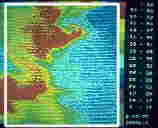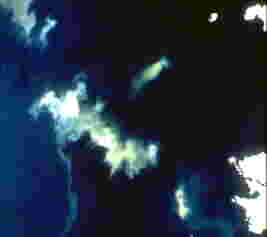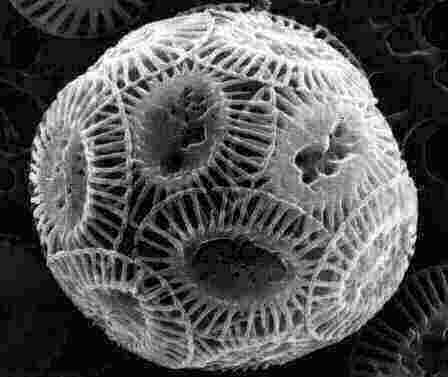 |
 |
 |
| 1 Unidentified Floating Object from LANDSAT - 1978 Image size: 30 km | 2 CZCS and the Emiliania huxleyi sea-truth -1982 Image size: 250 km | 3 Real-time assistance of satellite (visible AVHRR) to Emiliania studies -1986 Image size: 6 microns |
4 Epilog |
||
The white cliffs generally are set with fossil debris of calcareous plankton called cocccolithophores. One species of coccolithophore is Emiliania huxleyi. The cells are so small (6 microns) that under the light microscope they appear only as small dots or grains (kokko in greek). For this reason the observations of living cells at sea were very sparse. With the help of satellite remote sensing the observations at sea are now more frequent. However the principles and the interests of the satellite studies were fully ignored before 1982. How was Emiliania huxleyi discovered from space? Here is the story.
 |
 |
 |
| 1 Unidentified Floating Object from LANDSAT - 1978 Image size: 30 km | 2 CZCS and the Emiliania huxleyi sea-truth -1982 Image size: 250 km | 3 Real-time assistance of satellite (visible AVHRR) to Emiliania studies -1986 Image size: 6 microns |
4 Epilog |
||
All cell pictures from Nantes University and M.-J. Chretiennot-Dinet, all other unattributed pictures from M. Viollier.
Ehux home page